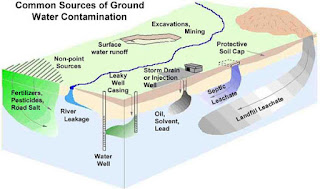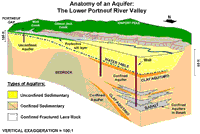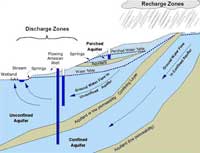
Concept of Region in Geography
In geography, regions are the areas that are broadly divided by its physical characteristics (physical geography), human impact characteristics (human geography), and the interaction of humanity and the environment (environmental geography).
Geographic regions and sub-regions are mostly described by their imprecisely defined, and sometimes transitory boundaries, except in human geography, where jurisdiction areas such as national borders are defined in law.
In the 20th century regions were classified into different categories ( different functional regions or planning regions) with the help of different statistical methods showing functional homogeneity in multiple attributes At present, the Region and regionalization get wide spectrum through the planning process in any country or a state or small unit of a natural, functional, or vernacular region of the word; to achieve the goal of sustainable development.
Characteristics of Region
A region is an area of a specific location. Distinctiveness: Every region is a distinct geographical area; Uniqueness Homogeneity: Homogeneity in one ore more geographical element within the boundary; Heterogeneity: Heterogeneity in those elements towards its regional boundaries; Dynamic/ Changing character: A region has dynamic character because its features where change during times; whether it is physical or human elements, single or multiple feature elements or functional or planning regions; geographical features where dynamics; Hierarchy: Every region has some kind of hierarchical arrangement. Dynamic Scale: A region can be different in scale according to its shape and size. Problematic: Every region have similar problems within its boundary; Purposive: A region is delineated for specific proposes. Resourceful: A region should be resourceful or have some specific resources so that they were utilized in the planning process.
Structure of Region
Node Zone Area
Node – Here polarization or centralization of Phenomenon is found. Nodes develop in functional regions but unidentified in formal regions.
Zone – it is segment of space/part of an area where intensity and magnitude of phenomenon is maximum.
Area– It include Node + Zone + Transitional Boundaries.
Thus Region is Node + Zone + Transitional Boundaries.
The three main types of regions are
formal,
functional, and
perceptional/vernacular regions.
Formal (Uniform) region
A formal region is a geographical region that is homogeneous and uniform within a specified criterion. This specified criterion could be physical, social, or political. Example – Himalayan Region, Sub-Tropical Region, etc. Such regions may be referred to as natural regions as they exist naturally on the geographical space. It is an area in which everyone shares in common one or more distinctive characteristics. This common characteristic could be a cultural value such as language, an economic activity such as the production of a certain crop, or an environmental property such as climate and weather patterns. Whatever the common characteristic is, it is present throughout the selected region. In certain formal regions, the characteristic may be predominant rather than universal, such as the wheat belt in North America, it is an area in which the predominant crop is wheat, but other crops are grown here as well. It's is further divided in 'Single feature Region '(ex. Physiographic regions of India),"Multiple Feature region' (ex. Resource Region or Planning region), and 'Compage region' (ex. Agricultural region of the World). Whittlessy (1956) defined 'compage region' as a uniform region where all the features of the physical, biotic and social environment are functionally associated with the human occupance. Later there was a shift to the use of economic criteria and social and political criteria such as language, religion, tribal population, political allegiance etc. Economic formal regions were initially based on types of industry or agriculture, but the scope of economic regionalisation expanded to the use of other criteria like income level, rate of unemployment and rate of economic growth. An important change in the scheme of regionalisation was an increasing emphasis on multiple criteria regionalisation rather than single criterion regionalisation. This indicated the increasing awareness of the thinkers and planners about the complexity that exists in the human world and the need for a logical categorisation of the complexity that exists over space. The world has been divided into a number of natural regions such as equatorial, temperate, tundra, desert, savannah regions etc. based on the climate, natural vegetation and location.
Types of Regions (Classification of Regions)
Regions are classified on the basis of selected criteria and purpose or goal. Primarily they are classified as Naïve region: It is a mental construct/ idealistic and hypothetical and subjective in nature (e. backward region). Instituted region Denoted region or Planning region Several geographers have worked on the typology of regions. Typology approach is also known as classical approach divides the region into Single aspect region Multiple aspect region Regions of totality Functional regions Regions can also be classified as Regions based on the physical character Regions based on cultural character Regions based on an amalgamation of physical and cultural variables Regions can also be classified on the basis of scale for Multi-Level Planning Macro-Macro level for studying a whole nation or state Macro-level for studying states within a nation Meso level for studying districts Micro-level for studying city/village Micro minor level for studying a particular sector or household Based on Areal homogeneity regions can be classified into Physical region: It includes land, soil, climate, vegetation, etc. For example Tropical region, Savanna region, Black soil region, Downs, etc. Economic region: It includes industrial regions, agricultural regions, services, etc., for example, Special Economic Zones, Great North Indian Plains. Cultural region: the demarcation of the cultural region is based on language, religion, etc. For example Hindi heartland, tribal regions, etc Campage Regions with more than one feature showing areal homogeneity. The above regions were demarcated based on a single feature but in Campage more than one features are selected. Based on Areal Linkages regions can be classified into Nodal region: Here there is one dominant urban centre around which smaller urban/rural areas develop. Axial region: It is the region that develops along a corridor and performs a special function. E. DMIC along National Highway 8 Adhoc region: they are transitional regions not on a permanent basis, and are generally backward regions. Here planning is done with a specific purpose in order to develop the particular region. Now a day a more comprehensive approach is followed for better planning and development.
Naïve regions
These are largely mental constructs and they are perceived section of space These have ill-defined boundaries or transitional zone or no boundaries. The criteria selected for demarcation are abstract and such regions are more fanciful. Such regions don't have a well-structured association of region-building elements and they are vaguely identified. An example of the above is the cultural region because culture can't be defined in precise terms and within a cultural region, elements of culture have contradictions like marriage rituals vary within the culture. The regions get their name by people living outside the region e. Mithila, Avadh, etc. These naïve regions are further classified as Metaphysical region: They don't exist in reality and more based on philosophy. E. concept of heaven/hell, the Marxist idea of the utopian society. World/physical regions: They are identifiable, observable but can never be confined within a lined boundary. They are largely transitional. E. cultural region Mithila, Avadh, etc.
The criteria may be physical. E. (topography climate, vegetation) or economic like industrial or agricultural (income, rate of unemployment, rate of economic growth) or cultural (language, central India tribal belt) They are largely fixed and static. They are identifiable by their composition or assemblage of the phenomenon. Example – Natural regions like Savanna, rain forest. Linguistic regions The bioclimatic region, Physiographic region, economic region, hydrological region Functional region: It is a geographical area that displays a certain functional coherence i. interdependence of parts. It is composed of heterogeneous units such as towns, cities, and villages which are functionally interrelated and working as a system The relationships are usually studied in form of flow (functional flow between towns and villages). For e. journey to work trips or shopping trips, the flow of goods and services, communication, etc. Thus, they have flow patterns (flow of goods and services from village to towns) and development of nodes (city and village acts as nodes of flow). The criteria taken for the identification of functional region is objective and identifiable e. Industrial region, Metropolitan region, Tourism region, Administrative region, Political region, tribal area development, etc. Nodal region comprises of the node or core or hub which connects all activities and unifies the region e. Mumbai is a node and the sprawling region have interdependency to the node. They are suitable for designing and implementing development plans for dealing with regional plans, for dealing with regional problems such as metropolitan or city region, river valley region, axial region (DMIC), transitional/depressed region (e. KalahandiBolangir- Koraput (KBK) region). According to C. Pathak and Amitabh Kundu, a planning region should have the following characteristics: It should be large enough to contain a range of resources, conditions, and attributes so as to serve the desired degree of economic viability and at the same time not too large to make a comprehensive approach too general (should not lose its uniqueness). It should have a fairly homogeneous economic structure as well as topographical and socio-cultural homogeneity (e. KBK region). A balance is needed between homogeneity, nodality, and administrative convergence while delimiting a region. Planning regions should be internally cohesive. Resource should be such that a satisfactory level of product combination for consumption and exchange is feasible. It should have few nodal points, to regulate geographically contiguous areal units (e. KBK region of Orissa). Planning Regions are generally arranged in hierarchical patterns such as Macro, Meso, Micro, etc. Here the bottom-up approach is followed for planning purposes (e. village to block to district).









